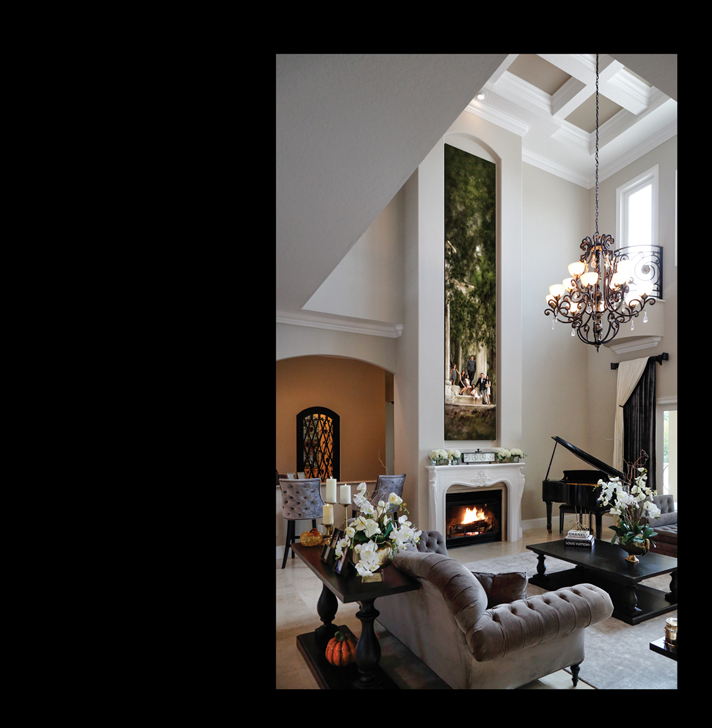Lesa and I have always been concerned with the management of our business as well as the technical side. We learned early on that minding our business was an extremely important factor in staying in business. Over twenty years ago Tom McDonald was our mentor in the establishment of sound business principles that would assist in monitoring and measuring the success of our operation. Much has changed with our profession over the past twenty-five years and being sensitive in recognizing change and being flexible to change are musts for survival.
Many years ago, during our long-term goal planning session, Lesa and I recognized our focus of being a general-purpose mom and pop studio needed to change. We determined growth in the twenty-first century would depend on elevating our image to the level of fine art. As a result of our new target, we developed a new business Model and Plan that would transform our studio over the next several years. This involved much energy, determination, brainstorming, staff participation and a process we called “branding” which is what I would like to cover in this article.
What makes a brand successful? First, the product must be so distinctive that it is easily recognized. For example, my daughters know exactly what a Tiffany’s box looks like and they can spot Starbucks miles away.
Second, it must evoke such strong emotions that viewers wish they had one like it, such as standing out among the rest holding a distinctive blue box adorned with a white ribbon and bow or the feel of being accepted by wearing the newest accepted fashions. But as important as both of these elements are, they are secondary to one main overarching element: public perception of your product.
If the public is confused about whom you are and what you stand for, they will not buy your product. Big companies spend big profits to ensure you know who they are. Mercedes represents words like high end, expensive, limited, upper class and luxury. McDonald’s represents words like fast, clean, convenient, consistent and low price. These companies, through extensive marketing, have taught the public how to perceive their product. It is no accident that the consumers have a similar impression of these products. Public perception is an incredibly powerful tool in your arsenal of marketing weapons. Now the only thing you have to do is understand how to put this powerful tool to work for you.
First, identify your target market and ensure you have a group to promote your product. For example, you may not think a fine French restaurant would be successful in a small town comprised of blue-collar workers. I often hear successful photographers state that “it will work anywhere” when responding to “it will never work in my town.” Before assessing the likelihood of success, you have to take a deeper look to understand what the consumer market looks like in terms of quantity and demographics.
Second, develop a survey to find out who they think you are. For example, you may believe you are a fine French restaurant but the public may think you are a cross between a McDonald’s and an Olive Garden. I must add a word of caution; it is very painful to find out what the public really thinks about your product. It is as difficult to build a survey that does not use biased questions to get the results you want. The survey must ask questions like, “You are about to visit a friend that just purchased a product from us and you brought another friend to see the product. When you enter the house and see the product what do you say to your friend? What room are you in? What does it look like?” After reviewing the answers to the surveys, you will quickly see if the ublic perceives your product as you do.
Third, focus on the results and develop a business plan that helps you to be who you want to be. Focus on what you love to do and what you do best. For example, if you want to be a fine French restaurant, then you must serve quality food with: spectacular service, rich surroundings, and outrageous prices. Avoid sending out mixed message to the public. Be extremely clear and leave no room for doubt as to who you are. We want our community to envision what a “Gregory Daniel Mixed Media Portrait” is just by saying the name. Our target is that a Gregory Daniel Mixed Media Portrait is a substantial investment, uniquely designed for their beautiful homes, hand crafted by an artist and creative in nature. These portraits are hanging on prominent walls in homes of the upper class. These clients each have a personalized experience during the planning, creating and selection process of their portraits. Our business plan was revised to ensure these elements were consistently delivered, from the initial marketing of Gregory Daniel Portrait Artist to following up with a client.
Fourth, renew the process by asking, asking, asking the public who you are. Take the results and adjust/refine by repeating steps one through three. Never assume you have completed the process!
Our goal is to have the market be able to envision a Gregory Daniel Mixed Media Portrait and what it represents without seeing one. Just the name should evoke a consistent response from the public. I believe that developing goals and sound business principles will prove to be a worthwhile investment on your part. Branding is just one of the principles we have used to help us focus on who we are and where we want to take our business.
Review how the public sees you through surveys and develop plans to improve your image within the marketplace. The renewal process can act as a catalyst to pump life into your business and streamline your marketing approach.
